Samarkand is one of the most ancient cities in the world. He found states and peoples that no longer exist. The heyday of Samarkand fell on the reign of Tamerlane. He made the city the capital of his empire. In addition, many of the architectural beauties of the area were created during that period. The followers of the ruler from the Timurid family continued his work.
How well they have succeeded can be eloquently expressed by UNESCO's high appraisal. Several architectural complexes are included in the World Heritage List at once. Mausoleums and mosques, even built at different times, look harmonious. And the Siab bazaar, it seems, has not changed at all in six centuries of existence. Registan Square deserves special attention - “a place covered with sand”. This is the pride of the entire Middle East.
What to see and where to go in Samarkand?
The most interesting and beautiful places for walking. Photos and a short description.
- Registan
- Ancient settlement Afrasiab
- Mausoleum Gur-Emir
- Shahi Zinda
- Bibi-Khanym Mosque
- Mausoleum of Bibi-Khanym
- Siab bazaar
- Khazret-Khyzr Mosque
- Mausoleum of Khoja Doniyor
- Mausoleum Rukhabad
- Mausoleum of Abu Mansur Maturidi
- Ishratkhona
- Memorial complex of Imam Al-Bukhari
- Ensemble Khoja-Ahrar
- Museum of the History of Samarkand Afrasiab
- Cathedral of St. Alexis of Moscow
- Carpet factory Khujum
- House Museum of Sadriddin Aini
- Monument to Amir Temur
- Observatory Ulugbek
Registan
The name of the main square of Samarkand is translated as "a place covered with sand". At one time, all areas of the Middle East were called Registan. Samarkand dates back to the 15th century and is known far beyond the borders of the country. In different periods, the square was a gathering point for troops, as well as a scientific center. It is now on the UNESCO World Heritage List. Not the last role in such a high assessment was played by a complex of three madrasahs. Ulugbek was created almost simultaneously with the Registan. Sherdor and Tillya-Kari were built in the 17th century. Madrasahs are not only beautiful, but also fulfill important missions: cultural, spiritual, educational.
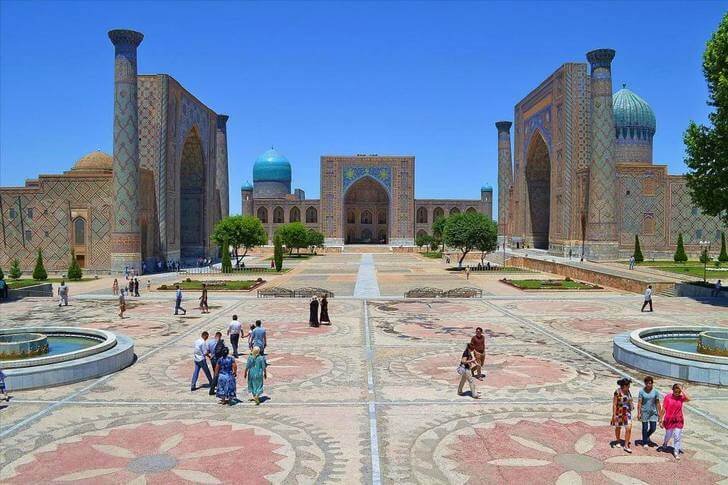
Address: Registan, Samarkand, Uzbekistan
Opening hours: 08:00 - 18:00
Ancient settlement Afrasiab
It is located in the north of Samarkand. Loess hills occupy an area of approximately 200 hectares. In the past, the Sogdian capital was located here. Archaeologists began to explore the territory in the 70s of the last century. During the excavations, terracotta figurines, glassware, and samples of tools were found. There is little reliable information about the appearance of the ancient city. By the 13th century, Afrasiab began to decline.
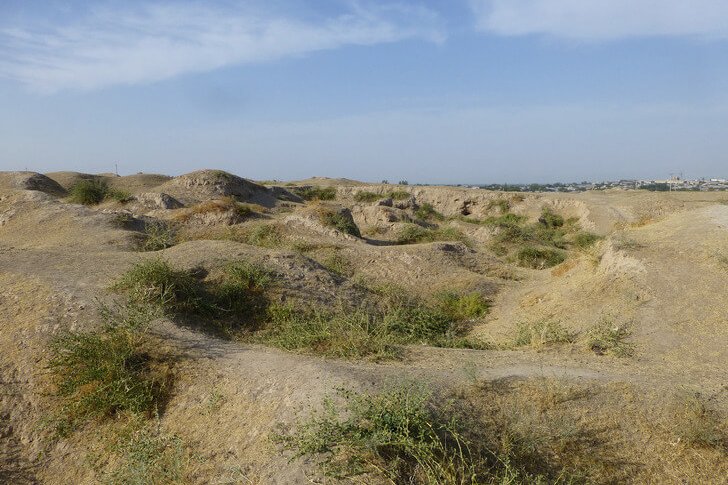
Address: Ancient settlement Afrasiab, Samarkand, Uzbekistan
Opening hours: 09:00 - 18:00
Mausoleum Gur-Emir
Ancient tomb of Tamerlane. Hence the name, which translates as "the tomb of the king." The building is impressive in area, has one high dome. For all its historical and cultural importance, the mausoleum is almost unadorned outwardly. In the design, tiles of soothing colors were used: white, blue, light blue. But the tombstone in the crypt is much more unusual: it was made of dark green jade.
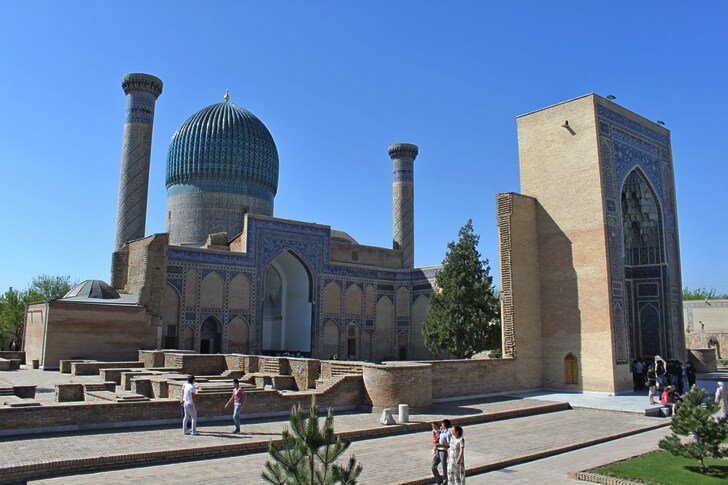
Address: Mausoleum Gur-Emir, Samarkand, Uzbekistan
Opening hours: 09:00 - 18:00
Shahi Zinda
Complex of mausoleums in the north of the city. Its name translates as "the living king." The attraction was formed during the XIV-XV centuries. On the "street of the dead" one tomb for representatives of the royal houses and the nobility was attached to another. There are 11 main mausoleums, however, during the excavations, numerous earlier burials were also found. The latest of these dates back to the 12th century.

Address: Shahi Zinda, Samarkand, Uzbekistan
Opening hours: 08:00 - 19:00
Bibi-Khanym Mosque
Built at the turn of the XIV-XV centuries in honor of his beloved wife from the harem of Amir Timur. In total, the complex included three mosques: a large main one with a blue dome and two small ones. The best masters of the East were invited for construction and finishing works. The courtyard was paved with marble and surrounded by a covered gallery. The outer walls were covered with ornaments, the inner ones - with carvings, patterns, mosaics. Now there is a reconstruction.

Address: Bibi-Khanym Mosque, Samarkand, Uzbekistan
Opening hours: 08:00 - 18:00
Mausoleum of Bibi-Khanym
It was built at the same time as the mosque. Judging by its appearance, it was originally attached to the madrasah. Externally, the mausoleum is not decorated with anything. Only a bright dome stands out against the general background. But inside visitors are fascinated by the silhouettes of stalactites, which are painted like ivory. The sarcophagi in the crypt are marble. They were investigated in the 40s of the last century. The remains of one of the women probably belong to Sara Mul Khanim.
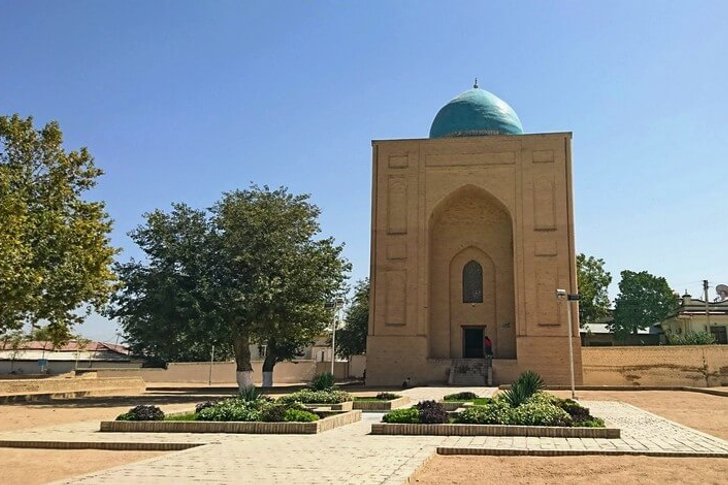
Address: Mausoleum of Bibi-Khanym, Samarkand, Uzbekistan
Opening hours: 09:00 - 17:00
Siab bazaar
About 600 years have passed since its foundation in the Old City. Little has changed in the oriental bazaar. On an area of more than 7 hectares, there are many trade pavilions and rows. It is always noisy and busy here. Bargaining is a mandatory component of any transaction. They sell a lot of goods. Spices, oriental sweets and dried fruits predominate. You can walk here from the Registan in 10 minutes.

Address: Siab bazaar, Samarkand, Uzbekistan
Opening hours: 09:00 - 17:00
Khazret-Khyzr Mosque
The first shrine appeared on this site in the 8th century. It was named after a prophet who patronized travelers. Destroyed almost to the foundation, the mosque began to be rebuilt in the middle of the century before last. The work spanned more than 60 years. The appearance of Khazret-Khyzr is typical for the Samarkand architectural school. In the interior decoration, the ceiling painting immediately catches the eye.
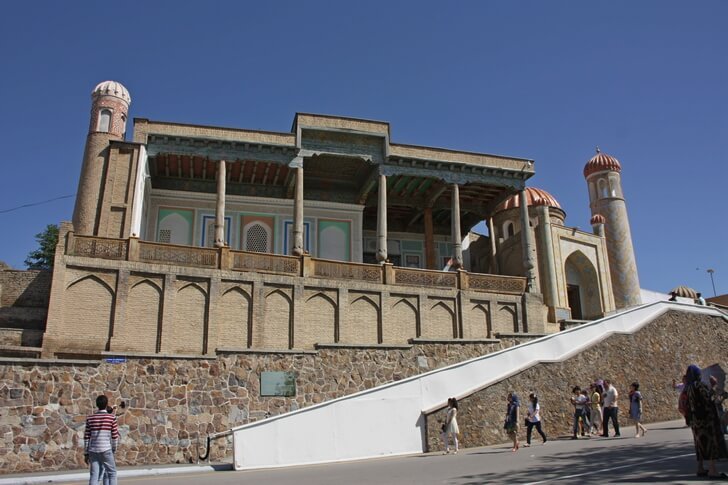
Address: Khazret-Khyzr Mosque, Samarkand, Uzbekistan
Opening hours: 09:00 - 19:00
Mausoleum of Khoja Doniyor
The Old Testament prophet Doniyor, also known as Daniel or Daniyar, is revered in three confessions at once: Islam, Christianity, and Judaism. His remains were brought to the city by Tamerlane. A mausoleum was built over the grave, there is a spring nearby, and an almond tree grows. It dried up, and then, for inexplicable reasons, came back to life. In 2001, the tomb with other city objects was included in the UNESCO World Heritage List.

Address: Mausoleum of Khoja Doniyor, Samarkand, Uzbekistan
Opening hours: 09:00 - 18:00
Mausoleum Rukhabad
It is located in the central part of Samarkand. Amir Timur ordered the construction of a mausoleum in 1380 over the grave of Sheikh Burkhaneddin Klych Sagardzhi. The latter was known as a preacher, theologian and scientist. The area of the cubic building is 168 m², and the height is 24 m, including the dome. Wall decoration is almost non-existent. They are covered with alabaster, only the arched entrances are trimmed with carved tiles.
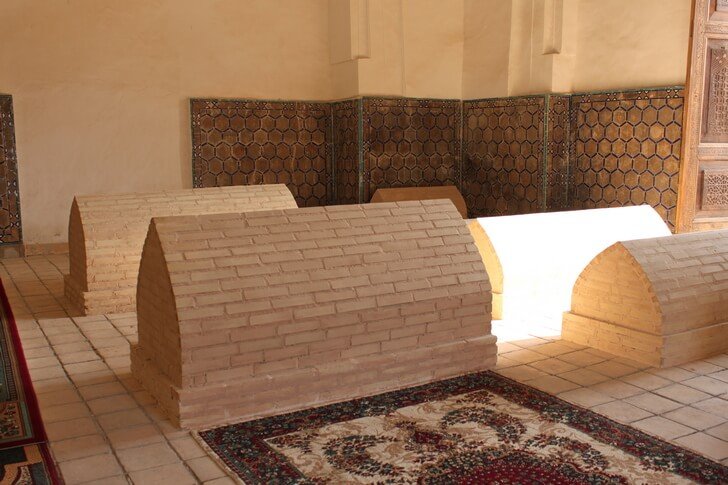
Address: Mausoleum Rukhabad, Samarkand, Uzbekistan
Opening hours: 09:00 - 17:00
Mausoleum of Abu Mansur Maturidi
The building was erected over the grave of the interpreter of the Koran. Nearby, according to legend, about three thousand more of his colleagues are buried. Over the years of its existence, the architectural monument has dilapidated and began to collapse. At the beginning of the 2000s, it needed reconstruction. The mausoleum was not only repaired, but also supplemented with decorative elements. For example, quotes from Abu Mansur himself appeared on a snow-white marble tombstone.
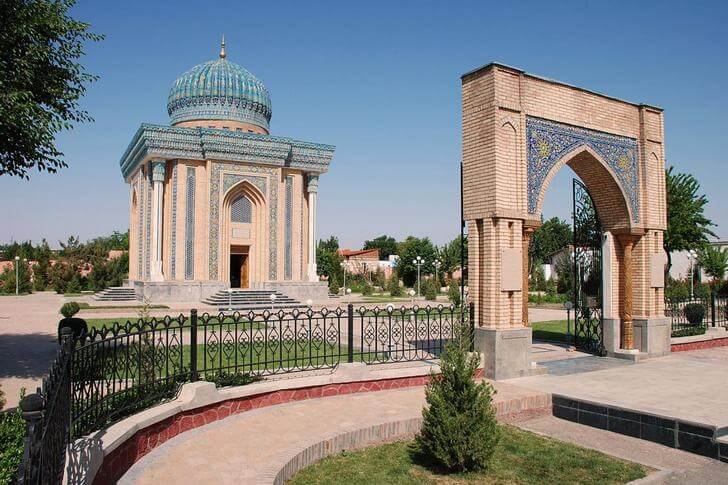
Address: Mausoleum of Abu Mansur Maturidi, Samarkand, Uzbekistan
Opening hours: 09:00 - 18:00
Ishratkhona
An architectural monument of the 15th century. It is currently in ruins. It was destroyed in stages, and earthquakes played an important role in its destruction. There is no clear idea what Ishratkhona was used for. As an option - a place for the burial of representatives of the noble family of the Timurids. It was decided to reconstruct the object, restored mosaic fragments have already appeared on one of the arches.

Address: Ishratkhona, Samarkand, Uzbekistan
Opening hours: 09:00 - 21:00
Memorial complex of Imam Al-Bukhari
It is located some distance from the city. It is one of the most important Islamic shrines in Central Asia. In the central part of the complex, a mausoleum was built, where the remains of the imam were buried. The tomb, like its dome, is made in soft blue tones. On the left, a khanaka with a mosque was built, and on the right, a spacious museum. In it, Islamic exhibits coexist with gifts from the heads of other countries.

Address: Memorial complex of Imam Al-Bukhari, Samarkand, Uzbekistan
Opening hours: 09:00 - 18:00
Ensemble Khoja-Ahrar
200 years after the death of Sheikh Khoja-Ahrar, it was decided to build a mosque and a madrasah near his grave. Since the region is seismically active, the buildings have suffered from tremors over time. They were reconstructed, which distorted the initial idea of the authors of the project. However, they returned to the restoration again, so that the complex shone with its former splendor. Now this place is one of the most visited in the city.
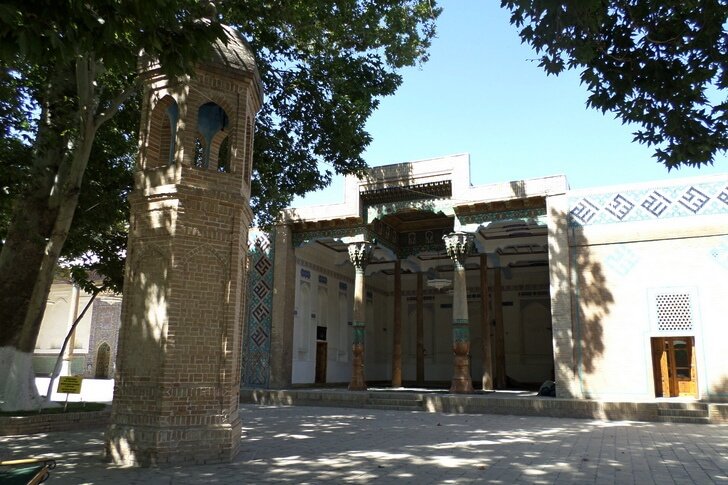
Address: Ensemble Khoja-Ahrar, Samarkand, Uzbekistan
Opening hours: 09:00 - 18:00
Museum of the History of Samarkand "Afrasiab"
The building was built in 1970 in the northern part of the city. The exposition is divided into 5 halls. The first contains archaeological finds. The second tells about the early history of Samarkand until the 6th century. The third contains evidence of the history of the conquests of Alexander the Great. The fourth is dedicated to the main religion of the city until the 4th century - Zoroastrianism. And the fifth refers to the spiritual life of the locals.

Address: Museum of the History of Samarkand Afrasiab, Samarkand, Uzbekistan
Opening hours: 09:00 - 17:00
Cathedral of St. Alexis of Moscow
It was built in the neo-Russian style for a military unit at the beginning of the last century. It was consecrated in 1912 and received the name of the metropolitan. The green arch above the entrance and the roof of the same color stand out against the background of the walls of the cathedral. After the revolution, the premises were given to the military. The dome and bell tower were destroyed. Later, a branch of the local history museum was placed here. In 1996, the temple was returned to the Russian Orthodox Church, and the re-consecration was carried out by Patriarch Alexy II.
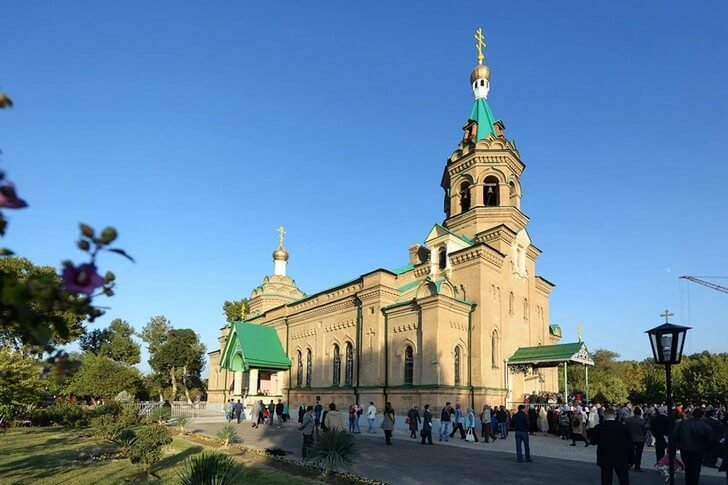
Address: Cathedral of St. Alexis of Moscow, Samarkand, Uzbekistan
Opening hours: 09:00 - 17:00
Carpet factory "Khujum"
Although the enterprise is called a factory, they work here manually using only primitive tools of the past. It takes about a year to create one carpet. It all depends on its size and the complexity of the pattern. Mostly national ornaments and their variations are used. During a visit to Khujum, tourists can observe all stages of the production process, starting with the dissection of the silkworm cocoon.
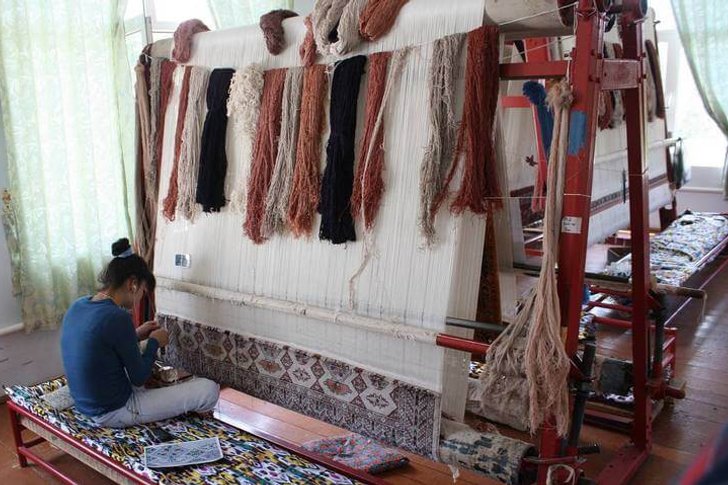
Address: Carpet factory Khujum, Samarkand, Uzbekistan
Opening hours: 09:00 - 19:00
House Museum of Sadriddin Aini
The exposition is located in the house where Aini lived for more than 30 years. He is a famous poet and writer in many countries. Sadriddin stood at the origins of the modern literature of his native country. He was persecuted for his views. The interior of the house has been perfectly preserved. The museum illuminates not only the creative path and personal life of the writer. There is an exhibition of household items from the pre-revolutionary period.
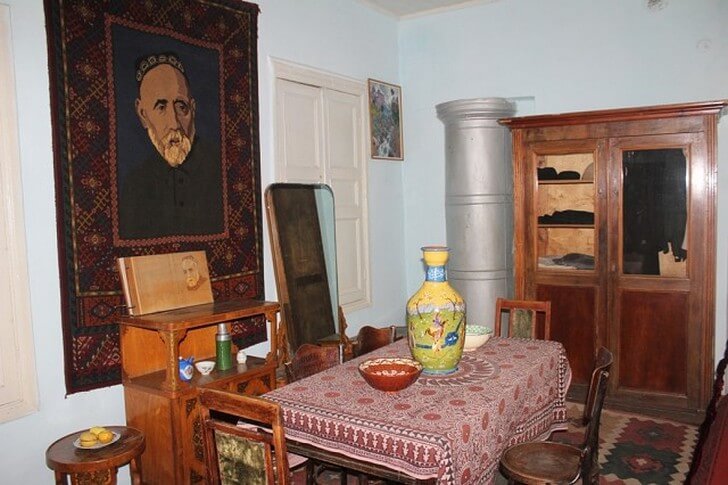
Address: House Museum of Sadriddin Aini, Samarkand, Uzbekistan
Opening hours: 09:00 - 17:00
Monument to Amir Temur
The majestic monument is installed on the university boulevard. Amir Temur is depicted sitting on a bench and leaning on a sword with both hands. His face expresses imperturbability. This area was developed in the last century. An alley of high plantings divides the avenue into two parts. In the modern period, illuminated fountains appeared here. The first European-style buildings in the city were built nearby.
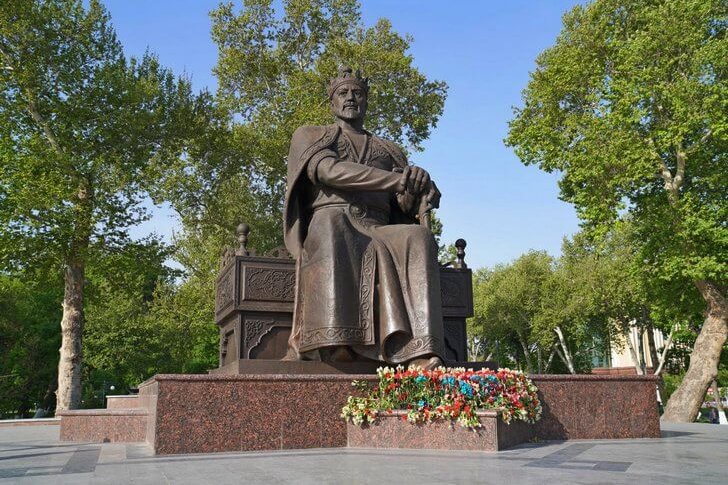
Address: Monument to Amir Temur, Samarkand, Uzbekistan
Phone: +998 66 235 10 10
Opening hours: 09:00 - 18:00
Observatory Ulugbek
It is named after its founder, a Turkic astrologer and astronomer. Here, in the 30s of the XIV century, an astronomical catalog was compiled with more than a thousand stars. It received the name Gurgan zij. The medieval historical monument was found in 1908 on Kuhak Hill. A complete study had to wait about 40 years. The observatory has been renovated. One of the valuable finds is a sextant of impressive size.
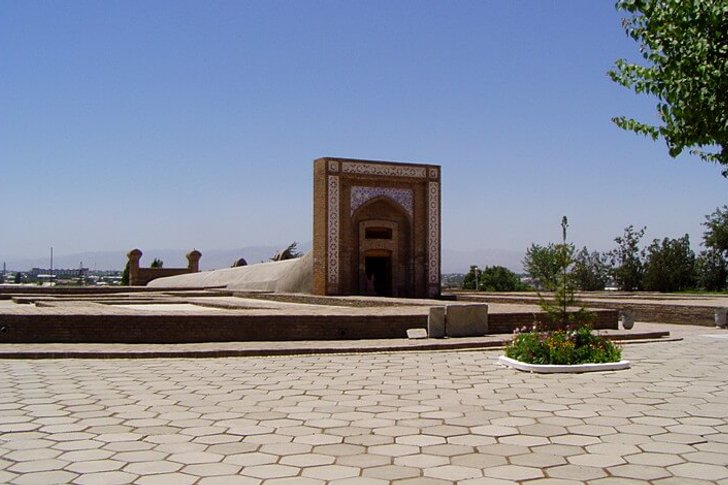
Address: Observatory Ulugbek, Samarkand, Uzbekistan
Opening hours: 09:00 - 17:00